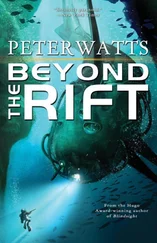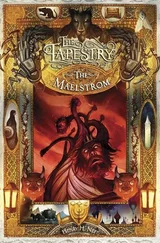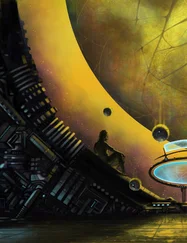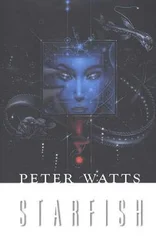ßehemoth's genetics are cadged from a variety of sources, many of which I quoted without really understanding. The stuff on mitochondria and pyranosal RNA come from Eschenmoser [10] Eschenmoser, A. 1999. Chemical etiology of nucleic acid structure. Science 284: 2118–2123.
, Gesteland et al . [11] Gesteland, R.F., et al. 1999. The RNA World. Cold Spring Harbor Laboratory Press, Cold Spring Harbor, NY. 735pp.
, Gray et al . [12] Gray, M.W., et al. 1999. Mitochondrial Evolution. Science 283: 1476–1481.
, and Orgel [13 13 Orgel, L. 2000. A simpler nucleic acid. Science 290:1306–1307.
, 14] 14 Orgel, L. and L. Ost. 1999. Did life originate in an RNA world? In Size Limits of Very Small Microorganisms: Proceedings of a Workshop. National Academy Press, Washington. 164 pp.
. ßehemoth's size and genome are consistent with theoretical size-limits for micro-organisms [15] Vogel, G. 1998. Finding life's limits. Science 282: 1399.
, and big enough to sustain a normal microbial metabolic rate. (Real nanobes are too small to contain many enzymes, which means that many of their metabolic pathways crawl along at uncatalyzed speeds. They therefore metabolize about ten thousand times slower than bacteria such as E. coli4 , which makes them pretty poor candidates for outcompeting a whole biosphere.) And of course, it's looking more and more likely that life itself began as a sulfur-dependent phenomenon in a hydrothermal rift vent [16] Rasmussen, B. 2000. Filamentous microfossils in a 3,235-million-year-old volcanogenic massive sulphide deposit. Nature 405: 676–679.
. I cobbled other bits and pieces from Lodesh et al. 's "Molecular Cell Biology" [17] Lodish, H., et al. 1995. Molecular Cell Biology, 3 rd ed. Scientific American Books, W.H. Freeman & Co., NY. 1344pp.
.
Why did I choose something as mind-bogglingly common as sulfur for a bottleneck element? I was trying to make a point about carrying capacity in ecological systems: life is greedy, and if you give it long enough, anything can become limiting. Besides, any primitive microbe from a hydrothermal environment is likely to have a serious sulfur-dependency problem. (The specialists in the audience will notice that I carefully avoided making ßehemoth an obligate sulfur-reducer; I actually envision the little mother's metabolism as being more akin to that of the giant sulfide-consuming microbes reported by Schulz et al . [18] Schulz, H.N., et al. 1999. Dense populations of a giant sulfur bacterium in Namibian shelf sediments. Science 284: 493–495.
.)
Bottom line, most of ßehemoth's traits have real-world precedents. Whether evolution could actually pack all those attributes into a package 250 nanometers across is a whole different issue, of course. Still. Look at all the stuff that fits into Batman's utility belt.
Guilt Trip:
The idea of behavior-modification technology is old stuff in fiction; Burgess' A Clockwork Orange is an obvious example. In Maelstrom I've taken a stab at rediscovering that wheel by explicitly tweaking genes and neurochemistry.
As far as I know, the existence of the "Minsky receptors" that Alice Jovellanos mentions has yet to be confirmed. Something like them, however, must be seated in the frontal cortex where human conscience and morality (such as they are) reside [19 19 Macmillan, M. 2000. An Odd Kind of Fame Stories: of Phineas Gage. MIT Press, Cambridge, MA, 576pp.
, 20] 20 Anderson, S.W. et al. 1999. Impairment of social and moral behavior related to early damage in human prefrontal cortex. Nature Neuroscience 2: 1032–1037.
. At the very least, certain types of frontal-lobe damage have a tendency to turn good God-fearing folk into sociopaths.
I imagine that Ken Lubin's murder reflex is wired into the neural circuitry described by R. Davidson et al . [21] Davidson, R.J., et al. 2000. Dysfunction in the neural circuitry of emotion regulation—a possible prelude to violence. Science 289: 591–594.
The conceit of using tweaked parasite genes to program such behaviour came to me when I was teaching an undergraduate course in animal ecology. The parasites mentioned in Maelstrom are real, and have a lot of company [22 22 Zimmer, C. August 2000. Do parasites rule the world? Discover : 80–85.
, 23] 23 Zimmer, C. 2000. Parasites make Scaredy-rats foolhardy. Science 289: 525–527.
. One fly-eating fungus hijacks its victim's nervous system just before killing it, forcing it to fly to an upside-down perch and orient its abdomen at an optimum angle for spore disperal. An ant-fluke called Dicrocoelium takes control of its host each night, riding it to the top of a convenient stalk of grass and freezing it there until morning in hopes that some other hapless host will eat it. And yes, Toxoplasma really does cause rats to lose their fear of cats (and in some cases, actually to be attracted to the smell of cat urine). It is also found in about half the members of our species. This stuff is straight out of The Puppet Masters , folks. There's even a substantial amount of evidence to suggest that sex itself evolved primarily as a countermeasure against parasite attacks [24] John Rennie, J. January, 1992. Living Together. Scientific American .
.
Anemone/Maelstrom
First, the Wilderness. The Internet is already more like a wildlife habitat than you might expect. Internet «storms» were first described in 1997 [25] Huberman, B.A., and R.M. Lukose. 1997. Social Dilemmas and Internet Congestion. Science 277: 535–537.
, which makes them old news: nowadays you can link to "weather maps" of Internet meteorology [26] Matrix-net's Internet Weather Report, at http://www.mids.org/weather/.
, updated several times daily. (Once again, my far-flung futuristic foresight has proven wonderfully adept at predicting the past. The last time was when Starfish predicted submarine ecotours to deep-sea rifts within fifty years, only to have such tours advertised in the real world by 1999.)
Those of you who have taken an undergraduate physiology course may remember the power law . It's a surface-area-to-volume relationship that governs living systems from whole food webs right down to the capillaries of shrews—essentially a pattern typical of self-organizing systems (i.e., biological) systems. As it turns out, the World Wide Web itself appears to be evolving in concordance with this law [27] Barabasi, A.-L. et al. 1999. Internet: Diameter of the World-Wide Web. Nature 401: 130–131.
. Something to think about…
Second, the Wildlife. These days it's hardly necessary to cite references on the subject of "artificial life": a web search on the phrase (or on "cellular automata") will demonstrate how massively the field has exploded over the past ten years. That subset of e-life which goes by the name «Anemone» is admittedly a bit more speculative, and based upon two premises. The first is that simple systems, in aggregate, display emergent behaviors beyond the capability of their individual parts. This is pretty much self-evident within a body—who'd deny that a brain is smarter than an individual neuron, for example? — but the principal extends even to aggregations of completely unconnected individuals. A school of fish or a flock of birds can be thought of, in effect, as a diffuse neural net [28 28 Parrish, J.K., and Edelstein-Keshet, L. 1999. Complexity, Pattern, and Evolutionary Trade-offs in Animal Aggregation. Science 284: 99-101.
, 29] 29 Koch, C., and G. Laurent. 1999. Complexity and the nervous system. Science 284: 96–98.
.
Читать дальше









